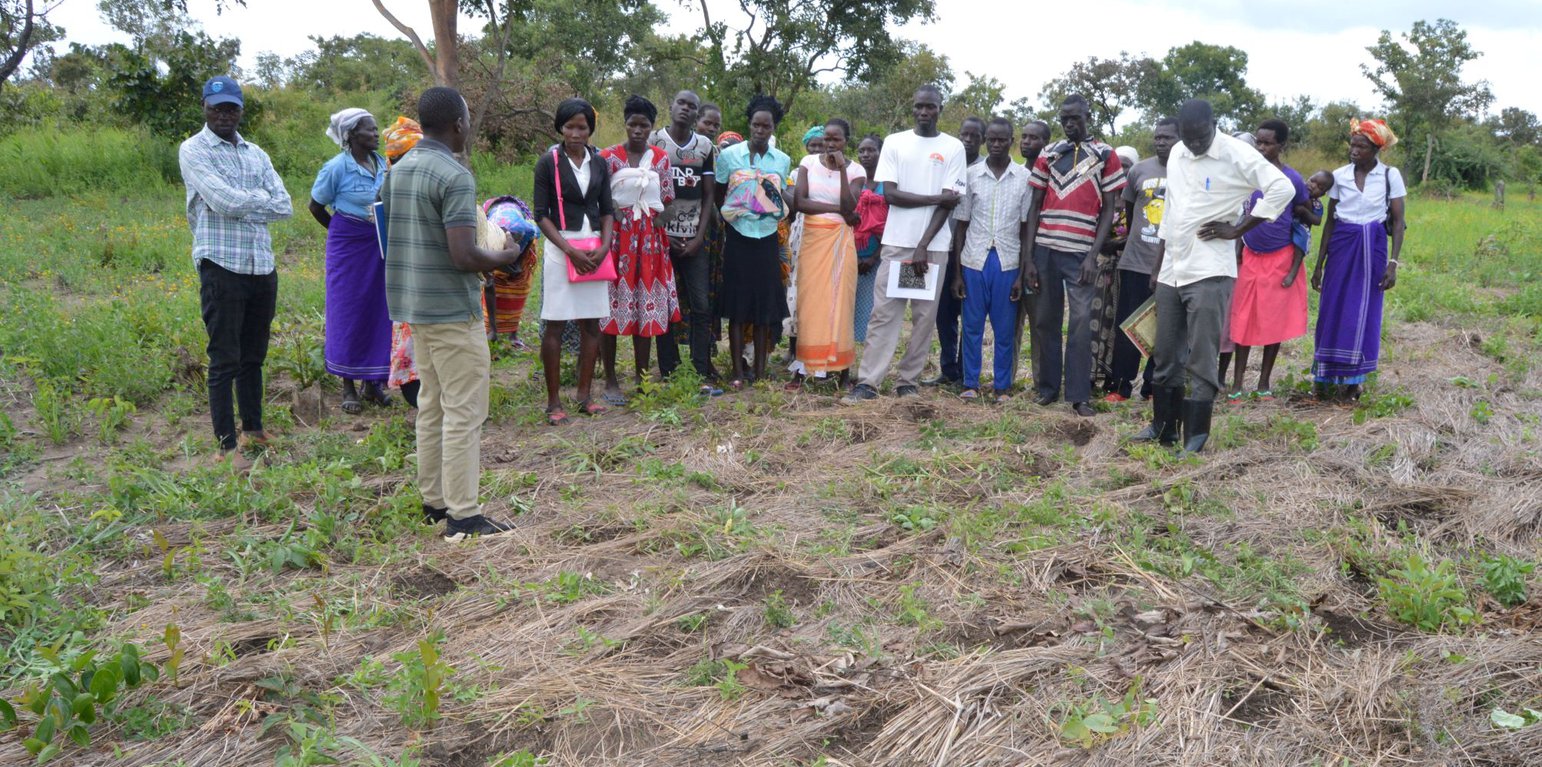



Farmers in Northern Uganda are observing changes in weather patterns. Rainfall has become unpredictable and unreliable for sustainable farming This forces farmers to adapt to these changes using available conservation farming technologies such as Conservation Farming (CF) basins.
CF basins are water conservation structures constructed in the garden during dry seasons. The basins store rainwater during rainy seasons and ensure water availability for plants during periods of little or no rainfall.
During construction of the basins, plant residues in the field are slashed and retained within the garden. A common hoe is used to excavate rectangular holes of about 30cm x 20cm, having a depth of 15cm. The top soil is put on one side of the basin while the subsoil is put on the other side. When the basin is ready, the top soil is put back into the hole to cover about half of the total basin depth. The basin is now ready for planting at the onset of rains. The spacing between basins depends on the type of crop to be planted. For groundnuts (Arachis hypogaea) it's 30cm x 30cm. The number of seeds per hole (seed rate) also depends on the crop. For maize, 3 plants per hole are to be planted, for groundnut, 6-8 plants per hole and for beans 6-8 plants per hole.
The basins are particularly important during critical growth periods such as germination, flowering and fruit seting if a sudden drought occurs. The basins conserve water, reduce surface runoff and support extended crop growth during dry seasons. After harvesting crop residues are put back into the basin to decompose so to build up humus in to basin.
Farmers who practice this technology have reported healthy crop growth and reduced risk of crop failure. However, construction of CF basins is labour intensive because good basins need to be constructed in the dry season when the soil is hard. However, this challenge is outweighed by the fact that basins only need to be constructed once every 3-4 years.
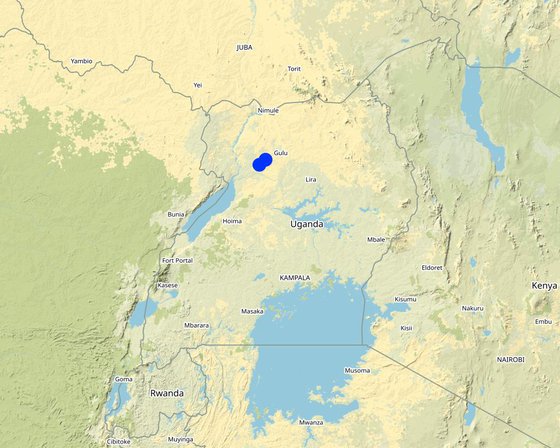
Lugar: Nwoya District, Northern, Uganda
No. de sitios de Tecnología analizados: 2-10 sitios
Difusión de la Tecnología: aplicada en puntos específicos/ concentrada en un área pequeña
¿En un área de protección permanente?:
Fecha de la implementación: 2016
Tipo de introducción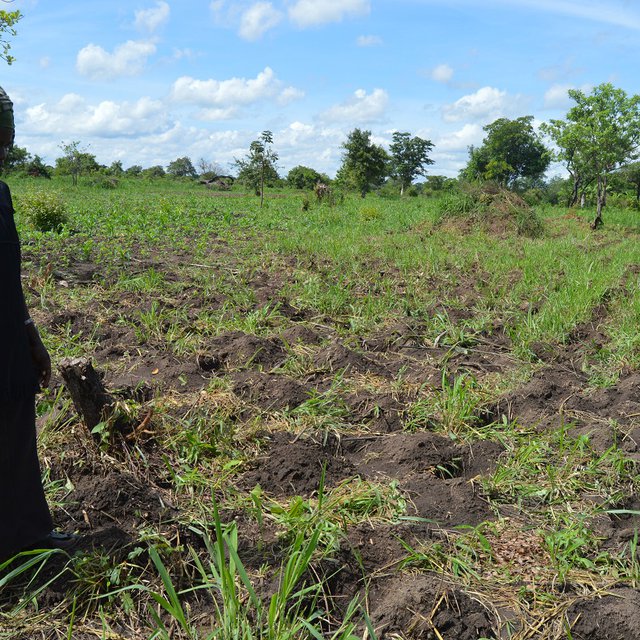
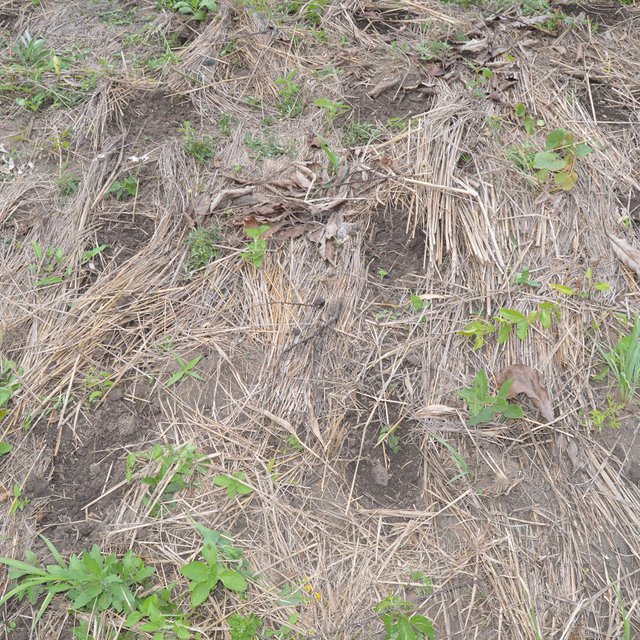








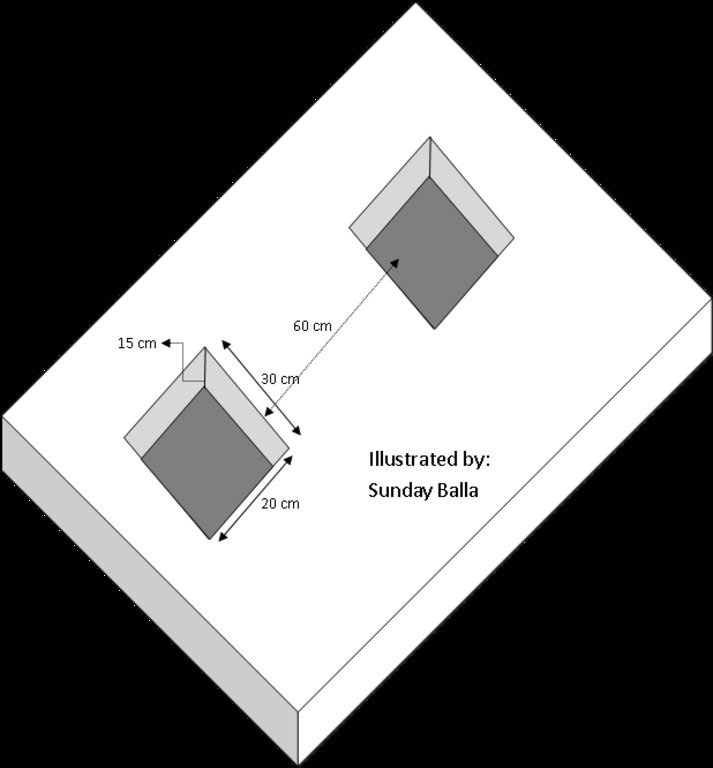
| Especifique insumo | Unidad | Cantidad | Costos por unidad (Uganda Shillings) | Costos totales por insumo (Uganda Shillings) | % de los costos cubiertos por los usuarios de las tierras |
| Mano de obra | |||||
| Slashing | person days | 15,0 | 5000,0 | 75000,0 | 100,0 |
| Construction of basins | person days | 30,0 | 3000,0 | 90000,0 | 100,0 |
| Planting | person days | 15,0 | 5000,0 | 75000,0 | 100,0 |
| Equipo | |||||
| CF hoe | no | 5,0 | 12000,0 | 60000,0 | 100,0 |
| Slashers | no | 5,0 | 6000,0 | 30000,0 | 100,0 |
| Material para plantas | |||||
| Seeds | kg | 30,0 | 5000,0 | 150000,0 | 100,0 |
| Costos totales para establecer la Tecnología | 480'000.0 | ||||
| Especifique insumo | Unidad | Cantidad | Costos por unidad (Uganda Shillings) | Costos totales por insumo (Uganda Shillings) | % de los costos cubiertos por los usuarios de las tierras |
| Mano de obra | |||||
| Labour | person days | 15,0 | 3000,0 | 45000,0 | 100,0 |
| Indique los costos totales para mantenecer la Tecnología | 45'000.0 | ||||
Water conserved in basins